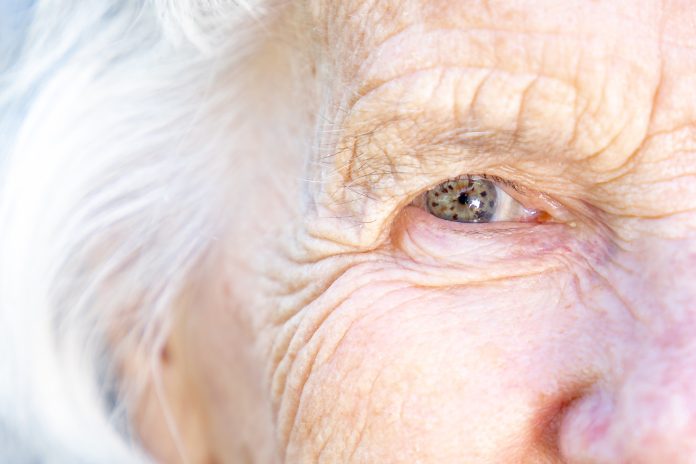Steven T. Reed, O.D., President of the American Optometric Association, discusses age-related macular degeneration (AMD), the leading cause of severe vision loss in adults over 50, and the importance of early diagnosis and preventive care
As the sole primary eye care providers in many communities across America, doctors of optometry are often a patient’s first entry point into the healthcare system. There are numerous instances every day where a patient visits a doctor of optometry with no prior issues but walks out with a life-changing diagnosis. Sadly, many of these conditions could have been either lessened in severity or eliminated if they just had their comprehensive, annual eye examination with a doctor of optometry. Detection is the key to prevention, and in too many cases, patients wait years and, in some cases, decades to visit even their primary care physician, let alone their doctor of optometry.
What is age-related macular degeneration (AMD)?
Age-related macular degeneration (AMD) is the leading cause of severe vision loss in adults over the age of 50. The Centers for Disease Control and Prevention estimate that 1.8 million people have AMD, and another 7.3 million are at substantial risk for vision loss from AMD.
The macula is an area on our retina that is in charge of our central vision. It is made up of millions of cells called photoreceptors. AMD occurs when there is a breakdown in these cells. When the cells break down and die, there is inevitable vision loss or vision distortion. The loss of central vision occurs in two forms: ‘dry’ (atrophic, the tissue dies) and ‘wet’ (exudative or bad blood vessel growth in the area of cell death). Most people with macular degeneration have a dry form for which no known treatment exists. If diagnosed and treated early, the less common wet form may respond to laser procedures and medication injections to slow or stop the bad blood vessel growth.
It is important to note that certain genes have been strongly associated with a person’s risk of AMD development. Studies indicate that the chances of developing AMD are potentially three times higher when individuals have a first-degree relative with macular degeneration.
The challenges with AMD
In its early stages, the signs of macular degeneration can go unnoticed, limiting our ability to put patients on a path of preventative care or early intervention.
Another major challenge with AMD is that it’s typically a progressive disease. The distortion of vision increases, and so does the loss of vision. Central vision that is lost to macular degeneration cannot be restored. AMD presents a significant safety risk, especially since it occurs in an older population that already may have mobility or balance issues. When you combine mobility issues with vision loss, you create a tremendous fall risk. Falls among older adults in the United States are the top causes of disability, traumatic brain injury, and death. Early detection of AMD and implementation of treatments can be a true lifesaver.
One of the main avenues of treatment for those with AMD is low-vision devices and low-vision rehabilitation services. The value of referring patients to a low vision specialist or low vision rehabilitation can be enormously helpful. In the early stages of the disease, learning strategies such as how to increase text size or adjust brightness, contrast, magnification, and color on electronic devices can make a massive difference in quality of life, plus put patients in a position of control in a time they may feel unsettled or anxious.
Many AMD patients experience significant disruptions in their daily activities. Many are forced to change their lifestyle drastically, limiting their sense of freedom or independence. Some may need to surrender their driver’s license, some may need to quit their job, and in many cases, the loss of central vision takes away the ability to see their loved ones’ smiles.
Additionally, the strain of recurring doctor appointments can deteriorate any healthcare routine. This is especially true for patients with wet AMD who are required to have injection treatments. These patients are seen at very regular and specific intervals, making it difficult for patients and their caregivers to stay on schedule with the frequent visits.
AMD is a devastating and insidious disease that MUST be dealt with as early as possible.
Current and new AMD treatments
There is some positive news. There are several treatment options for individuals with AMD. While no permanent cures exist, many of these treatments can help minimize vision loss.
Studies have shown that for dry AMD, there is a potential benefit from specific vitamin supplements, implementing a Mediterranean diet, protection from ultraviolet light, and immediate cessation of smoking. Making these dietary changes and taking specific (Age-Related Eye Disease Study formulation (AREDS) nutritional supplements can slow vision loss. Researchers have linked eye-friendly nutrients such as lutein and zeaxanthin, omega 3 supplements, or consuming fatty fish, vitamin C, vitamin E, and zinc to reducing the risk of certain eye diseases, including macular degeneration.
Less common, ‘wet’ macular degeneration occurs when fluids leak from newly formed blood vessels under the macula. These leaky blood vessels can take over the surrounding retina, like how weeds take over a garden. The blood vessels can choke off the surrounding healthy retinal cells and significantly advance the disease, the vision loss, and the risk of blindness. If detected early, wet AMD can be treated with laser treatment, which is called photocoagulation. A highly focused beam of light seals the leaking blood vessels that are damaging the macula. Another laser-based treatment is called photodynamic therapy (PDT). In PDT, a medication is injected into the bloodstream, ultimately reaching the bad leaky blood vessels. Once in the pathologic blood vessels, a light is emitted to cause damage to the bad blood vessels and seal them off.
Another common treatment is a direct injection of anti-vascular endothelial growth factor (Anti-VEGF) directly into the eye. This medication has a protein that stops the growth of new blood vessels. Anti-VEGF is commonly injected directly into the eye and must be repeated multiple times to have its full effect. It is important to note that while none of these are permanent cures, they can help minimize vision loss.
In terms of new treatments, two new injections have recently been approved for a specific form of dry AMD – geographic atrophy. Similar to all new treatments, many considerations must be taken into account.
Given the prevalence of AMD and the myriad opportunities for management, it is critical for patients to consult their doctor of optometry to identify the appropriate course of treatment.











